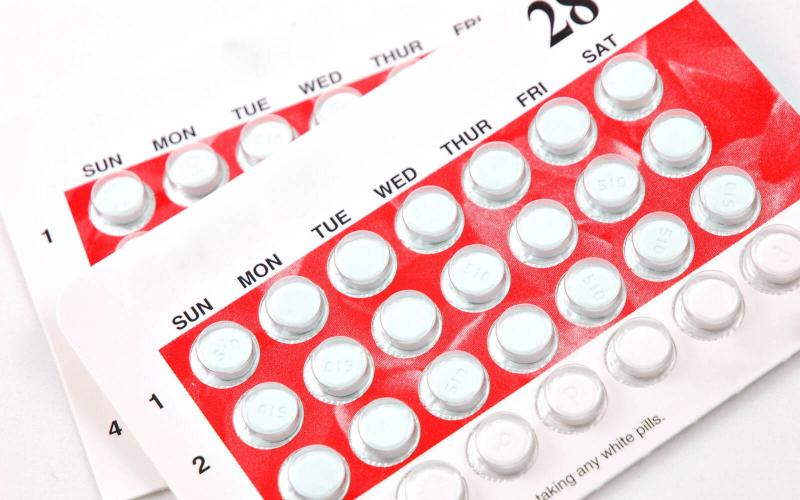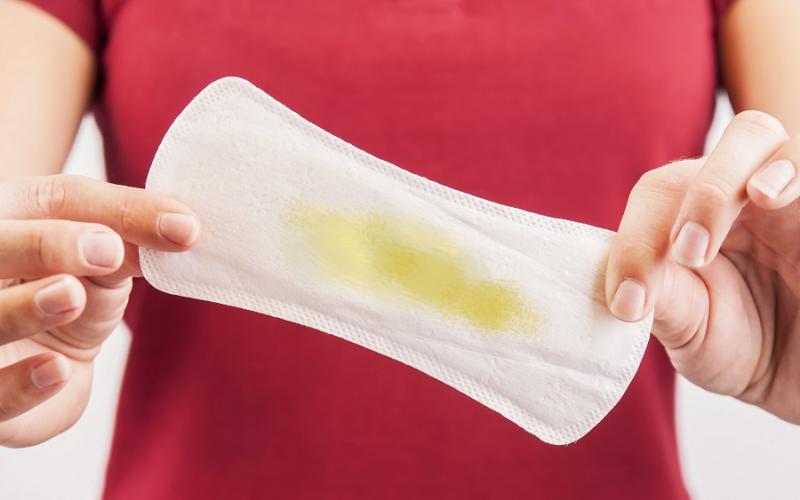A humidifier is a well-known device that contributes to the creation of an optimal microclimate in the room. But have you ever thought that such a useful device can cause harm?
Probably, many owners of ultrasonic humidifiers are familiar with such a phenomenon as white coating on interior items as a result of moisture. However, the plaque from the humidifier is not as bad as the sediment and scale in the humidifier.
Since the operation of any device designed to humidify indoor air is based on the use of water, the main reason for the appearance of plaque is the use of water of inadequate quality.
The instructions for the devices always indicate the need to use distilled or, at a minimum, filtered water. In domestic conditions, situations often arise when this rule is not observed and ordinary available water is poured into the humidifier - from a tap, well, etc. However, the problem is that unpurified water contains various salts - this is not to mention other microelements and even possible microorganisms.
Due to the use of untreated water, all impurities present in it settle on the walls of the device, forming a crust mainly white color. If you do not regularly take action and do not clean the humidifier from plaque, then the crust "petrifies" and contributes to the further accumulation of problems.
It should be said that the use of traditional mechanical appliances is fraught with the danger of not only the appearance of scale, but also the release of various kinds of bacteria into the room. Devices of this type are characterized by the phenomenon of stagnant water in the tank, as a result of which bacteria and other harmful organisms can multiply, a smell of rot appears, which spreads throughout the room.
What is dangerous scale
Many users of humidifiers often do not even pay attention to its innards until a breakdown occurs. However, any type of humidifier should be descaled regularly to prevent a number of possible problems:
- The emergence and spread of pathogenic microorganisms.
- Water blooms.
- The appearance of mold.
- The formation of various kinds of chemical compounds that adversely affect human health.
- Deterioration of the device.
- Reducing the life of the humidifier.
Any mechanism, like any organism, needs regular cleaning. This is especially true of devices that directly affect the state of the human environment.
One of these is a humidifier. We have some kind of climate that can be flooded with showers, then in the summer season it can literally suffocate with drought. BUT excessively dry air is far from useful to the inhabitants of the apartment.
The humidity level should remain optimal, creating a favorable environment, especially in families where there are often cold children or the elderly.
Moisturizing devices create a comfortable microclimate for the nasal mucous membranes suffering from high temperatures, protecting them from drying out.
But in order for the humidifier to work without failures, it is necessary to carefully monitor its condition and make “treatment” in a timely manner, in particular, to get rid of scale.
Where are you from, dude?
Humidifiers of all types are filled with water. And the quality is not always perfect. Tap water contains salts of heavy metals. During operation, they are able to settle in the form of scale on the inner surface of the device, significantly reducing its productivity. As a result, the duration of the humidifier is also reduced.
 To avoid this, it is recommended to use distilled water or well filtered, in which harmful impurities are much less.
To avoid this, it is recommended to use distilled water or well filtered, in which harmful impurities are much less.
It is important to get rid of the formed plaque once a week and a half, when it does not take much effort to remove it.
Hardened scale sticks to the walls of the device tightly and not only worsens the quality of the humidifier, but also is a favorable environment for the emergence and reproduction of pathogenic bacteria.
What are humidifiers?
Descaling the humidifier must match the type of appliance and depends on how it works.
If the device is mechanical, the water in it enters special cartridges through which the fan sprays it with an air stream.
Many experts note noise during operation and low productivity among its shortcomings.
The principle of operation of a steam humidifier is practically the same as that of an electric kettle. When connected to the network, the water is brought to a boil and released in the form of steam. The main "disease" of this type of device is the formation of limescale, which leads to a decrease in the thermal conductivity of the heating element and as a result of poor performance of the humidifier.
Scale in the steam appliance is removed accurately.
Ultrasonic humidifiers have become very popular. The principle of their operation is based on the fact that a special membrane, vibrating at a high frequency, sort of knocks cold steam out of the water.
Due to the presence of a hydrostat, this humidifier works in the “director of its own” mode - it is able to turn on and off as soon as the humidity level reaches the set one.
Let's help ultrasonic
Instructions are included with every major purchase. Before proceeding with the descaling of the appliance, it is necessary to study it.
 First of all do not forget to unplug the appliance from the mains. Next, we will follow the step-by-step process of how to clean the ultrasonic humidifier from scale.
First of all do not forget to unplug the appliance from the mains. Next, we will follow the step-by-step process of how to clean the ultrasonic humidifier from scale.
The tank is separated from the base of the device.
The remaining water is poured out of the container.
Thoroughly rinse the tank under running water.
We clean and wipe the base with a soft sponge to remove the main deposits.
The membrane should be cleaned with a brush designed for this, which is usually included in the kit.
To remove scale as efficiently as possible, We recommend using an anti-limescale cleaner.
A weak solution of vinegar also gives a good result: you need to take half a stack and dilute it in a liter of water.
Moisten a soft cloth thoroughly in the resulting solution and gently wipe the working part of the device.
Never use cleaning products that can damage the surface, containing abrasives.
Dry all parts and assemble them.
Fill the reservoir with water.
 By the way, an anti-lime agent can also be prepared from citric acid:
in the same amount of water as for the vinegar solution, completely dissolve two tablespoons of "lemon".
By the way, an anti-lime agent can also be prepared from citric acid:
in the same amount of water as for the vinegar solution, completely dissolve two tablespoons of "lemon".
? Find out in the article.
What does a mechanical humidifier need?
All the first steps are identical to those performed with an ultrasonic humidifier. How to wash the humidifier inside if it is of a mechanical type?
As in the case already described, improvised means should not be "traumatic" for the device: soft fabric, gentle cleaning solution. The latter is made from soap - liquid or ordinary, grated with shavings. Add one hundred grams of soap chips to water and stir until foam forms.
The presence of aggressive substances in their composition is harmful to the humidifier and can cause a failure in its operation. In addition, once in the water sprayed with a humidifier, the remnants of such products can adversely affect the well-being of people in the room.
With a damp cloth, the tank is carefully washed from the inside. To get to more hard-to-reach corners, you can use a soft toothbrush. In no case should a strongly hardened plaque be cleaned off with a metal washcloth. or a knife to avoid scratches.
Having moistened a soft cloth in an acetic solution, wipe the nozzle with it and, together with other parts, rinse it under a tap.
All parts are blotted with a dry cloth or towel, allowed to dry and proceed directly to the removal of scale.
Cleaning solutions can be made from the following components - from each separately (!): soda - 2 tbsp. spoons; citric acid - 100 g; vinegar - 150 ml.
One of the prepared solutions is poured into the tank, and left in the humidifier for 12 hours. During this time, the scale will exfoliate from the walls, it remains only to carefully clean off the particles that have not fallen off.
Rinse the tank thoroughly with running water until the smell of, say, vinegar disappears.
 If the pollution created by scale is very strong, it is better to turn to special means, recommended by the manufacturer of your humidifier. They are usually listed in the accompanying product data sheet.
If the pollution created by scale is very strong, it is better to turn to special means, recommended by the manufacturer of your humidifier. They are usually listed in the accompanying product data sheet.
, details in the article.
In all problems with household appliances, proper care of them is also important. So, among the tips on how to properly clean there is this one: change the water in the tank as often as possible, because stagnant water "precipitates", becoming scale.
The second point: if the humidifier is often used, then it should be rinsed with a solution of hydrogen peroxide or vinegar literally after three days, and a more thorough cleaning should be carried out after two weeks, and then it will serve faithfully for a long time.
A humidifier creates a comfortable microclimate in the room that prevents many diseases and alleviates flu symptoms. Such devices have a beneficial effect on human health, but quickly become contaminated.
Just buy a humidifier and enjoy it will not work. You will have to read the information on how to care for the device. The level of humidity in the house, as well as the health of the family, depends on the cleanliness of the tank and filter.
Why do you need a device?
too dry or wet air negatively affect the health of the household and the condition of the furniture.
It is important to control the level of humidity in the house. It is recommended to keep it at 30-50% to avoid health problems.
The main benefit of a humidifier is to help combat dry air, which can cause the following problems:
- dry eyes;
- sore throat;
- dryness of the nasal passages and even bleeding;
- colds and flu become more common;
- cracked skin on the hands and lips;
- aggravated allergy symptoms;
- worsening asthma;
- skin itches;
- wooden furniture and flooring can crack and break.
With the help of humidification, the air becomes purified. More moisture appears in it, so that such health problems no longer occur.
Humidifier Benefits:
- The baby's skin will not crack. Dry air can also aggravate eczema and other chronic skin conditions. Sufficient moisture helps the baby fight off such diseases, and also improves overall health.
- The children sleep peacefully at night. If the air is dry, the child will constantly have a stuffy nose and a morning cough.
- Helps adults and children recover faster from colds and flu. A humidifier relieves the symptoms of respiratory diseases. It "lubricates the nasal passages", which makes it easier to breathe. It also helps relieve sore throats.
- Using a humidifier in combination with a high-quality indoor purifier can improve asthma symptoms.
- The health of the hair depends on the humidity in the room. The skin on the head becomes irritated and dry, itches and flakes if the air is dry. With a sufficient level of moisture, the hair ceases to be brittle and dry, they begin to "breathe and live" again.
- Moist air reduces static electricity. If it is dry, sparks occur when it comes into contact with animal hair or knitwear.
- Moist air is good for indoor plants. They need water from the soil and air to survive and thrive.
This device is a must for every home. It brings many benefits to both the house itself and its inhabitants.
Why clean up?
Using this technique, you need to know how to properly clean it and why it should be done.

Regular cleaning will not only prolong the life of your humidifier, it will keep it from getting into the air.
What is important to know:
- Use distilled or demineralized water. Tap water contains minerals that promote mold. Buy filtered water whenever possible.
- Fluid should be changed daily. Standing water can lead to mold growth.
- Regular cleaning. To avoid the penetration of harmful microorganisms into the air, which subsequently lead to the appearance various diseases, it is necessary to clean the humidifier every week. Wipe regularly inner part disinfectants.
- Don't forget to change the filter. Not all humidifiers have this component, but if it does, you should change it as often as the manufacturer recommends. If this is not done, mold and bacteria will get into the air.
It becomes clear that dry air and lack of cleaning can affect the health of households.
Whether your machine is ultrasonic, air filtered or steam, it should be cleaned weekly.
soap solution
Timely hygiene procedures will prevent the formation of limescale.

A professional cleaning product is not recommended. Subsequently harmful chemical substances will be released into the air.
You can wash the plaque inside with an ordinary soap solution at home, and if you carry out the procedure at least once a week, you can.
How to clean a humidifier?
First you need to disconnect it from the network. Then rinse the empty tank from water.
Cleaning the humidifier from scale:
- Prepare a concentrated soap solution. You can use shavings of laundry soap or dish detergent.
- Soak a cloth or brush in the foam solution, and process the container from the inside. If there is no plaque, use a cloth, and if the dirt is not washed off, take a brush. You can replace the brush with a toothbrush or the hard side of a kitchen sponge (just take a new one).
- When rubbing, do not press hard on the tank, it is undesirable for scratches to form on it.
Do not use bath or toilet products as detergents. They are too aggressive and can destroy the device.
Hydrogen peroxide
You can also clean the tank with peroxide. This product is cheap and cleans great.

Use hydrogen peroxide to disinfect the container. It just needs to be diluted before use.
How to clean a humidifier with peroxide? The question is relevant and of interest to many device owners.
Action algorithm:
- First, clean the tank with soapy water, rinse with clean water.
- In a container, dilute hydrogen peroxide (1 tsp) with 1 liter of water.
- Close the device and connect to the network. The device needs to work a little. This will clean not only the tank, but also other components of the device.
- When steam appears, turn off the device immediately. Do not pour out the solution, leave it for a couple of minutes in the tank.
- Then empty the appliance and rinse with warm water.
- Hydrogen peroxide is difficult to wash off the first time. Therefore, fill in distilled water a second time, and repeat the procedure, just let the device work for 3-5 minutes.
- Then empty the tank again and flush with clean liquid.
Distilled water should also be used for washing. It remains only to dry the humidifier in a well-ventilated area.
If the device needs general cleaning, do not rush to carry it to the workshop. Try cleaning it yourself with table vinegar.

How to clean the humidifier:
- Prepare a not too concentrated solution. Pour 1 tsp into 1 liter of distilled water. vinegar.
- First, the device is washed with soapy water and rinsed to remove some dirt and prepare for the procedure.
- Then the device is wiped with a cloth soaked in acetic solution.
- Leave the agent to act. A few minutes will be more than enough.
- Then rinse the tank and other parts of the humidifier with clean water.
- Wipe the device with a dry soft cloth.
After such treatment, the tank will come out. You can get rid of it if you leave the device on the balcony or take it outside in the shade.
The device must be well ventilated. It might take a few hours.
Chlorine
You can clean the air humidifier from scale and mold with a solution of chlorine. Such care is not recommended to be used more than 1 time in 2 weeks. After all, chlorine is a chemical.

How to wash the humidifier:
- Prepare a solution. Pour 4.5 liters of distilled water into another container, and add 1 tsp. chlorine. Mix the solution well.
- Pour some into the humidifier tank. Do not plug the device into the network, just leave the solution to work for a while. It will be enough for 1 hour for the mold and harmful microorganisms to die, and the scale to weaken.
- Rinse the tank with clean water. It is advisable to rinse the container of the humidifier several times.
After chlorine treatment, an unpleasant odor can also come from the device. Therefore, the tank must be ventilated.
The frequency of cleaning depends on how hard the water is when using the humidifier. But everyone is advised to follow these recommendations, and not to carry out this procedure more often than expected.
A safer way to clean is to use baking soda with lemon or citric acid. Both products are safe for the health of households.

How to properly clean:
- Prepare a concentrated solution. Add 4 tbsp per liter of water. l. citric acid or juice of one citrus and 1 tbsp. l. soda.
- Pour the resulting solution into the tank and turn on the device. The device should work within an hour. Thus, not only the tank is cleaned, but also the filter.
- At the end, turn off the appliance, wait 30 minutes, and start cleaning the scale.
This method is suitable for mechanical type devices.
Ultrasonic devices do not need to be turned on. Just pour the prepared solution inside and leave for a couple of hours. During this time, the scale will soften and it will be easier to wash it.
When cleaning the air humidifier, take it out to the balcony or outside. The second option is to leave the premises for a few hours.
Timely cleaning will not only save households from respiratory diseases, it will protect the device from the formation of a strong plaque crust.
There are many products that can be used as household cleaners. The main thing is to follow the proposed algorithm of actions and not overdo it with washing.
- Hard brushes should not be used on ultrasonic membranes. Wash your device with the accessories that come with it.
- Cleaning solutions must not be allowed to enter the apparatus.
- Before assembling the parts, dry them well or wipe them with a soft, dry cloth.
- Instead of baking soda, citric acid, chlorine and vinegar, you can use special cleaners to remove scale from kettles. They disinfect and quickly get rid of limescale. Chlorine can be replaced with bleach, but you can’t mix them together, dangerous fumes will be released that are harmful to health.
- Cleaning only with soda or citric acid is impossible. Be sure to dilute with water. These are powdery substances that can scratch the tank.
These tips will help you solve the problem of how to properly and how to clean the humidifier.
Do not wait until the plaque hardens and the tank becomes covered with a thick crust. Take some time and clean the device in a timely manner in order to avoid problems with the device in the future.
Optimum indicators of moisture content in the surrounding space of the room are from 40% to 60%. During the heating period, the humidity in the room is reduced by more than 25%. Modern devices - air humidifiers - help to combat this adverse phenomenon. With its help, a satisfactory microclimate in the room is created for all family members: the immune system does not fail in young children, it helps the elderly to survive the heat more easily, and allergy sufferers to get free breathing.
What problems can a humidifier cause?
But like any equipment, the air mass humidifier needs proper and timely care. When using a humidifier, over time, mold appears in the tank, the fungus multiplies, and the device itself becomes covered with scale. This is due to improper use of the device. In here, timely and regular care of the air humidifier eliminates 99.9% of harmful bacteria that settle in the water tank.
Why scale and bio-fouling appear
All modern humidifiers, regardless of design, use water that is collected in a special reservoir. It is on its quality that the duration of operation of the device, its performance, and the formation of scale depend. Manufacturers recommend using distilled water, which is not always possible. You can also use filtered water, which contains a minimum of harmful impurities.
In practice, many people use tap water for a humidifier, which contains a large number of heavy metals. The use of tap water leads to the formation of plaque. That is why many are interested in how to clean the humidifier from scale correctly. Salt deposits must be cleaned once a week. If you do not follow this rule, you can lose the device forever.
Important! Neglect of timely care leads to plaque hardening and the formation of a strong crust, which reduces the performance of the fan and heating element. Such an environment is a breeding ground for microorganisms, bacteria, mold and fungi.
How to descale a humidifier

Timely "hygienic" procedures will protect against the formation of a strong crust of plaque. To perform them, disconnect the device from the mains and leave it to cool completely. Remove the water tank, pour out the liquid - now you can start cleaning:
- dirt removal. For the procedure, you will need a soft cloth and soapy water. To prepare a cleaning agent, it is necessary to mix 100 g of shavings of laundry soap without additives and 200 ml of warm water until smooth. Shake the prepared product until foam is formed;
- tank cleaning. Moisten a piece of cloth with the prepared foam solution and wipe the water container from the inside with it. The procedure must be carried out very carefully. To eliminate dirt and soft deposits in hard-to-reach places, you can use toothbrush with soft bristles. When using it, you should not press hard on the walls - this can lead to scratches, and this should not be allowed in any way;
- nozzle cleaning. To remove dirt from this element, vinegar mixed with water in a 1: 1 ratio is used. With the help of the same cloth, soft scale and dirt are removed with light movements;
- rinsing the tank and nozzle. Humidifier elements must be rinsed under running water after treatment. You can also wash the humidifier in distilled water.
Dry the clean water tank with a soft towel and leave to dry completely. If the container is absolutely clean, you can return it to its place.
Important! How to wash the humidifier is indicated in the instructions for the equipment. Compliance with these rules allows you to extend the operating time of the device.
Do not use detergents for dishes, bathtubs or toilets to wash the humidifier. Their aggressive environment can destroy the device, and if they enter the air when spraying water droplets, it is possible headache and even allergies.
Cleaning the air humidifier from a hardened crust

Hardened salts must never be removed mechanically. To clean the tank from solid scale, soda, table vinegar or citric acid are used. These substances react chemically with plaque and soften it. To prepare a cleaning solution, you need to take an amount of water equal to the capacity of the container into which one of the reagents is added: 50 g of soda, ½ cup of table vinegar or 4 tablespoons of citric acid. Pour the prepared solution into the tank and turn on the humidifier for 1 hour. During operation, the solution will soften hard salt deposits that simply fall off the walls of the tank.
Important! It is necessary to clean the air humidifier on the balcony. Sprayed water with an acidic solution must not enter the room. If this is not possible, then the humidifier should be installed as close as possible to the open window, the spout should be directed to the street.
Exfoliated solid particles are carefully cleaned with a cloth or soft brush. The last step on the road to cleanliness is to rinse the tank with clean water. The procedure is carried out until the unpleasant odor disappears completely.
How to clean an ultrasonic humidifier
To care for an ultrasonic humidifier, a solution prepared from water and vinegar, soda or citric acid is used. Unlike the mechanical type of device, it should not be turned on. The prepared solution is simply poured into the tank and left to soften the hard scale for 12 hours.
Important! The membranes of ultrasonic humidifiers are cleaned with a special brush, which is included in the kit. In the event that it is not available, a piece of fleece fabric or a soft sponge is used.
Disinfection of the air humidifier: a mandatory care step
Disinfection of the device is carried out once every few weeks. For the procedure, chlorine-containing agents are used. To disinfect the humidifier:
- carry out a complete cleaning of the device, which will eliminate dirt and hard scale;
- prepare a chlorine solution based on the size of the tank. To do this, you need to mix water and bleach: 5 ml of the product is added to 1 liter of liquid;
- pour the disinfectant liquid for the humidifier into the tank and leave for 1 hour;
- drain the spent solution and rinse the tank under running water;
- pour water into the tank and turn on the device. As soon as steam appears, the device should be disconnected from electricity;
- drain the waste water, rinse the container, fill with fresh water and turn it on again. Repeat the procedure until the smell of bleach is eliminated.
You can replace bleach when disinfecting the device with ordinary hydrogen peroxide, which is added to water in an amount of 250 ml.
The miracle cure for a humidifier is prevention. It includes the timely removal of dirt and "young" scale, the use of soft or distilled water. Also, do not allow the liquid to stagnate in the tank. In the event that the device is turned on irregularly, it is necessary to remove dirt and water droplets after each use.
A humidifier, like any other household appliance, requires systematic maintenance. This circumstance does not depend on the type, device and functionality of the device. Caring for your humidifier is necessary to remove scale, plaque and dangerous microorganisms. They are formed on the internal elements of the device from constant contact with water.
Humidifier requires maintenance to ensure maximum performance
In addition, the humidifier is "afraid" of dust. It also needs to be cleaned periodically. Compliance with all requirements for the care of the climatic device will ensure maximum efficiency. Proper cleaning and rinsing will prolong the life of your humidifier.
Humidifier device and general care information
Before considering the issues of caring for a humidifier, you need to find out its device.
Consider the constituent elements on the example of the most common type of climatic devices operating on the principle of creating ultrasonic waves.
The ultrasonic humidifier has the following device:
- Plastic case.
- Reservoir for filling water.
- Replaceable filter cartridge.
- Thermal tube for liquid heating, connecting the water tank and the ultrasonic chamber.
- Fan.
- A membrane that generates ultrasonic waves.
- Steam chamber with UV treatment.
- Steam diffuser.
- Power supply and control panel.

Almost all parts of the humidifier, except for the fan, power supply and control panel, are in contact with water during humidification. For this reason, the technical specifications for each humidifier have specific water requirements.
Ordinary water contains the following elements:
- iron;
- calcium and magnesium salts;
- manganese;
- fluorides, sulfides, chlorides;
- organic compounds, bacteria and microorganisms.
For different models of humidifiers, it is recommended to use different water. The exact data should be looked at in the instructions. Most often, distilled or filtered water will do. Less commonly, it is recommended to use a demineralized liquid, with the salts removed. The use of the “correct” water will significantly reduce the size of scale and plaque formation.
Improper operation of the humidifier without periodic cleaning and maintenance will lead to the following consequences: the formation of hard deposits on the internal walls and parts of the device; reproduction of pathogenic microorganisms, bacteria, mold. All of the above incomparably has a significant impact on the performance of the device, its serviceability and durability.
The humidifier should be maintained using the following measures:
- Cleaning and washing from mineral plaque and scale.
- Disinfection.
- Preventive dust removal.
- Timely replacement of filters.
Cleaning and rinsing
General information on the care of the humidifier is contained in the technical data sheet, so do not rush to throw away the booklet after purchasing and unpacking the device. In detailed descriptions, many manufacturers indicate the frequency of cleaning and rinsing, necessary materials and sequence of actions, in the form of a diagram.
What you need to clean and rinse your humidifier at home:
- Pure, boiled or distilled water.
- Rag (soft cloth).
- Brush: special, included in the kit, or regular for brushing your teeth.

To clean the humidifier, you need to take cleaning products and a soft cloth.
The frequency of cleaning depends on the quality (hardness) of the water, the intensity of operation. It is best to clean after each use of the device. All care procedures are carried out with the obligatory shutdown of the device from the electrical network.
How to clean the humidifier from scale?
- All water is drained from the device, if it was there.
- Removable elements are pulled out of the humidifier (atomizer nozzle, water tank, filter cartridge, ultrasonic membrane), if any.
- The humidifier is rinsed with clean running water, the device is dried.
- A soap solution is prepared by diluting dishwashing detergent in water.
- Using a brush moistened with a solution, all internal parts of the device and parts are cleaned.
- The ultrasonic membrane is carefully cleaned with a brush.
- Particular attention is paid to cleaning the nozzle from scale and plaque. Here it is better to use an anti-lime solution or a weak solution of vinegar. A weak solution of vinegar can also be used to treat other parts of the appliance that come into contact with water during operation, as it effectively removes limescale. As an alternative to the vinegar solution, you can use a citric acid solution.
- All parts are washed with clean water, the device is wiped with a dry soft cloth and dried.
- The humidifier is assembled, water is poured into the container, the device is ready for a new use.
The outer surface of the humidifier body should be washed weekly with a mild cleaning agent. You can limit yourself to wiping with a soft cloth to remove dust. Rinsing and cleaning should be carried out especially carefully so as not to flood the working devices of the humidifier with water. This can lead to short circuit and breakage.
How to clean the air washer and steam humidifier. The nature of cleaning and rinsing depends on the type of humidifier. Washing requires simple maintenance, due to the simplicity of the device. It is enough to change dirty humidifying filters in a timely manner and rinse the device itself. In steam devices, the approach that removes plaque in teapots works great. To do this, water with citric acid is poured into the device.
The humidifier turns on for 3-5 minutes. A hot solution of citric acid will perfectly peel off scale and plaque. After turning off the device, the solution is drained and a standard rinse with clean water is performed. You can simply hold the solution in the device without turning it on for 2-3 hours.
Disinfection
Clogging of the internal elements of the device contributes to the creation of a favorable environment for the development of microorganisms, bacteria and mold. This situation poses a significant threat, since the entire “content” of the device is sprayed into the room, after which the microorganisms enter our body with breathing. This can lead to the development of dangerous diseases. Therefore, it is important to carry out thorough disinfection.
To remove microorganisms, bacteria and mold, the instrument must be disinfected. For this, an aqueous solution of chlorine is used. As chlorine-containing products, it is effective to use any bleaches. A solution of chlorine (water and one teaspoon of bleach) is poured inside the appliance. The solution is left for 60 minutes. After exposure to a chlorine solution, all parts of the device should be rinsed several times with clean water until the characteristic smell of chlorine disappears.

Hydrogen peroxide is an effective alternative to chlorine
Hydrogen peroxide can serve as an alternative to chlorine solution. To prepare a solution, ½ cup of hydrogen peroxide is added to 4 liters of water. The finished solution is poured into the tank and the humidifier is turned on. After 2-3 minutes of operation, the device turns off and the solution is drained from it.
The humidifier is thoroughly rinsed with clean water. Water is poured into the container, the humidifier turns on for a few minutes. After that, you need to wash the device again. The procedure is carried out in a room with open windows or with the air conditioner turned on. Disinfection is recommended to be carried out at least once a month.
How to remove fungus in a humidifier and clean parts from mold. A big problem can be the removal of mold that has formed on the walls in the water tank if this part of the device is not removed from the device. How to clean the ultrasonic humidifier in this case? For this, ordinary solutions of chlorine and hydrogen peroxide are suitable. For 12-24 hours of settling in a container, they will remove all the mold. If possible, you need to brush the inner walls.
Care products
What products can be used when cleaning the humidifier from scale and organic matter? To clean the humidifier, you will need the following materials:
- Vinegar solution. To prepare it, you will need to mix 50 ml of vinegar in 1 liter of water.
- Chlorine solution.
- Lemon acid. 2 tablespoons of citric acid are added to 1 liter of water.
- Mild dishwashing detergent.
- Hydrogen peroxide.
It is better not to use different detergents, as they contain different chemical elements which may affect the operation of the device.
In addition, these elements, remaining on the parts of the humidifier, will later be sprayed into the room air. All this will be inhaled by people, the elements will settle on furniture and other interior items.
When removing scale, it is not recommended to use abrasive products. Containing detergents and abrasives (particles of quartz sand, sodium bicarbonate, etc.), these products can damage the surfaces of parts and lead to damage to the device.








